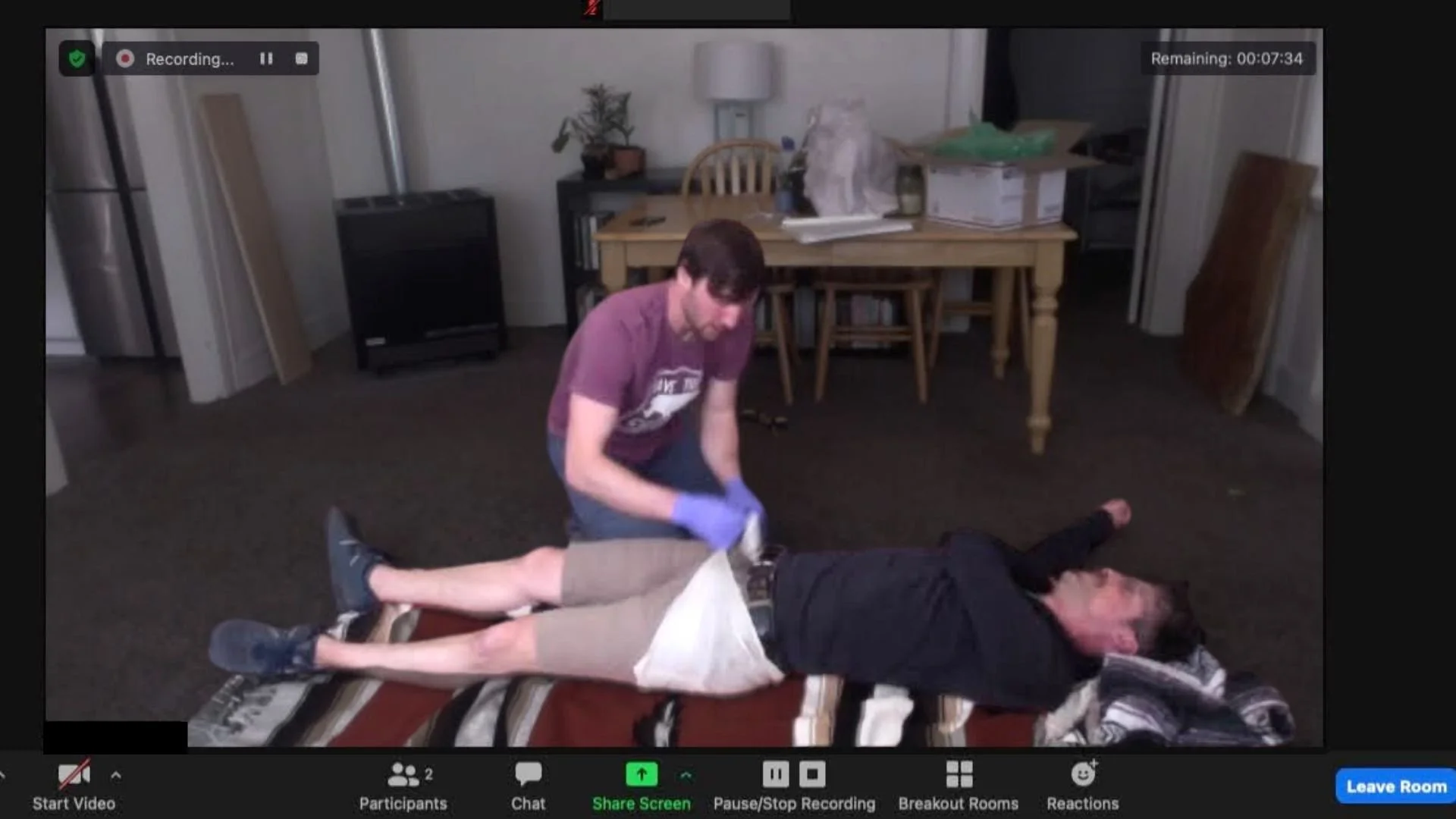Increasing Access and Sustainability for All
What exactly is remote wilderness medicine training?
Remote Wilderness Medicine Training
Remote wilderness medicine training is the delivery and facilitation of wilderness medicine concepts and hands-on skills in the live-virtual environment, such as Zoom.
A virtual training option is important for addressing the financial, time, and geophysical barriers that exist in accessing and maintaining wilderness medicine training. It is particularly useful for students who live in “wilderness medicine deserts", for underpaid outdoor professionals, and for organizations with a large member base or members located in various locations.
Remote training is only available for Wilderness First Aid and Wilderness First Responder Recertification. It is not available for initial WFR certification. Please note, Base Medical is discontinuing the 100% online recertification option in January 2025.
Yes, it’s really hands-on!
Students are required to have a volunteer (or another student) to act as their patient while they work through patient assessments, vital signs, splinting, bleed control, wound cleaning and closing, lifting and moving at patient, and more.
Students are required to have basic first equipment within arms reach at all times during the remote training.
The remote classes are kept small in order to facilitate personal feedback and guidance from the instructor to the student. Students often receive more feedback in a remote training than they do in a large in-person training.
Specialized Instructor Team
Teaching is an art form, and even more so in the virtual environment. Instructors are speciality trained to facilitate student engagement and skills practice in this setting. Instructor must meet our 3:1 active to passive learning requirement as established by the Wilderness Medicine Blended Learning Standards.
Program Structure
Remote trainings are delivered over two days. The first day serves as both a WFA course and the first day of the WFR recertification course. On this day, students review the Patient Assessment System, shock, and major medical, trauma, and environmental emergencies.
Day 1 Hands-On Skills:
One day one, students will perform the following hands-on skills:
5 full patient assessments (scenarios, two of which are video-guided and dynamic)
lifting and moving a patient with a spine injury
building and placing a patient into a 5-point hypowrap
bleed control, including pressure dressings
Splinting, including sling and swathe and lower leg injuries
Vital Signs, including heart rate, respiratory rate, skin, level of consciousness, and more
Day 2 Hands-on Skills:
Day two includes video-guided scenarios of critical patients that require WFR level care. These scenarios are dynamic and longer than the scenarios on day one. During the scenarios, students are pushed to think critically and perform at their highest level.
Students will also participate in two table top exercises on day two. The first focuses on evacuation decision making and long term patient care in an austere environment. The second exercise includes a Mass Casualty Incident and the basics of coordinated response (ICS). The day ends with a discussion about the unique considerations for CPR in the wilderness, including for hypothermic cardiac arrest. Day two is usually the highlight for most students.


